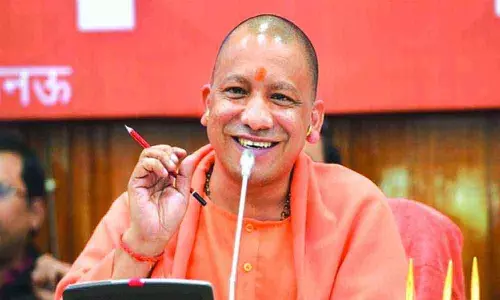
NRC: A journey from panacea to a deadly prank
text_fieldsIn a three-year long project more than 55,000 officials did a Herculean task of examining citizenship status of more than 3 crores people living in the north-eastern Indian state of Assam.
On 30th July 2018 the National Register of Citizens (NRC) published the final draft excluding more than 40 lakhs people out of the list, keeping them on the verge of losing their citizenship and effectively making them stateless. However, the NRC authorities have assured that they would be provided with sufficient opportunity to prove their citizenship during the claim and objection process.
Assam has a long legacy of anti-immigrant sentiment in public sphere for more than a century. Rich natural resources and abandoned fertile land motivated the colonial administrators to bring large number of people from other parts of British India including Bengalis from over-populated Bengal to resettle in Assam for a project called ‘grow more food’ with an intention to increase the revenue.
Politics of Anti-Immigration Sentiment
Though the immigrant Muslims settled in Brahmaputra valley accepted Assamese language and culture and denounced their Bengali identity to assimilate with the host community, the local community still felt threatened by the large scale immigration. This fear of losing land, identity and culture soon transformed into conflict as early as in the years of 1920s. The conflict escalated further in late 1940s when Congress leader Gopinath Bordoloi became premier of Assam ousting Syed Sadulla of Muslim League and evicted thousands of Muslim peasants in 1946 alleging them to be illegal immigrants from East Bengal. In the environment of communal polarization and conflict, the country got divided and attained its independence. Well-known historian Amalendu Guha opined that after independence, the migration of Muslim peasants almost stopped. But the conflict continued.
After independence Muslim community faced large scale violence and forced displacement in 1950; officially 53,000 families left the country and took shelter in East Pakistan and returned later on under Nehru-Liaquat pact.
In 1951, the first National Register of Citizen was prepared to weed out the illegal immigrants from East Pakistan. Since then the anti-immigrant politics has been feeding Assamese community with the fear of losing of land, identity and culture. On the other hand the Muslims have been experiencing state-sponsored persecution and mass violence at regular intervals.
In late 1960s, several hundred thousand Muslims were forcefully deported to East Pakistan under a draconian scheme called ‘Prevention of Infiltration from Pakistan (PIP)’, without following any legal mechanism of detection and deportation.
Genesis of Current NRC
The series of violence and persecution against Muslims continued unabated with absolute impunity. Since early 1980s, an unprecedented violent agitation against the Muslims engulfed entire state. The six years long agitation took several thousand lives including the victims of infamous Nellie Massacre where more than three thousand Muslims were killed within a few hours of day time.
In 1985, the agitating groups, state government and central government signed the ‘Assam Accord’ and agreed to detect and deport any immigrant who came to Assam after 25th March 1971. This document is seen as the genesis of updating the 1951 NRC.
After several years of debates, discussions, and also several rounds of violent events, almost all the stakeholders, including the Muslims who are often branded as illegal Bangladeshis, came to the consensus of updating the NRC. The Muslim community perceived an updated NRC as a panacea for all sorts of persecution, harassment and discrimination which are running high over the last century.
Discriminatory and Exclusionary Process
But gradually, the NRC was made another tool for persecuting the Muslim and Bengali Hindus through its range of exclusionary and discriminatory provisions. Though the entire population of Assam had to file the application for inclusion in the NRC however as many as 12 million so called indigenous people were given the benefit of ‘original inhabitant’ or ‘OI’, a category which doesn’t even hold any constitutional validity and was never part of the initial modalities, but it empowered the lowest level registering authority to include any names even if s/he fails to provide any documentary evidence. On the other hand, the Muslims, Bengali Hindus and a few other marginalized groups are subjected to stringent verification process including the uncanny ‘family tree’ matching.
Apart from this discriminatory and racial provision, NRC authority deployed a number of exclusionary diktats, mostly beyond the initial modalities to exclude as many Muslims and Bengali Hindus as possible. Already, there are more than 1.3 lakh people who are arbitrarily marked as doubtful voters or D-voters and their cases are still pending in the 100 Foreigners Tribunals across the state. NRC authority outrightly excluded those people from the draft NRC. It also excluded the so-called declared foreigners, their descendants and siblings as well. Even several thousand people who have been declared as ‘Indian citizen’ were also not included in the final draft.
Initially, the NRC authority accepted a number of documents but at the last moment the district level officials were instructed either to reject certain documents or were instructed to strictly scrutinize the contents of those documents. It is easily inferable that these discriminatory and exclusionary provisions were fielded only to inflate the number at the cost of genuine Indian citizen’s suffering only to fulfil the collective conscience of a politically motivated hostile regime and some chauvinist groups.
Repercussions
This will have far reaching repercussions on the lives of several million people mostly poor and impoverished and already messed up in the recurrent conflicts and environmental disasters. Thousands of families across the state are going through tremendous amount of mental pressure and trauma. In most cases, some of the members of a family have been included and remaining are excluded. Most of the excluded people are women and children. This has not only affected the excluded but also the family members who are included in the list. In the last few months, more than a dozen of people have committed suicide in the fear of losing their citizenship.
In the current scenario, if someone fails to prove his/her citizenship before NRC authority during the claim and objection process, then s/he will have to go through the biased and prejudiced Foreigners’ Tribunal. Unfortunately, if the person fails in the Foreigners’ Tribunal as well, the person will be stripped of the citizenship rights. Nobody knows what would happen to these people.
As per the current mechanism, the government has only the option to dump them in the detention centres. Currently there are six over-crowded detention centres and the government is working to build another giant detention camp in Goalpara district of western Assam. Even in best case scenario, if they are detained they would lose their civil and political rights including right to property. They wouldn’t be able to flee to other Indian states; as the government is planning to collect their biometric information so that they even can’t forge their identity and flee to other Indian states.
And thus an environment of deadly silence and trauma has taken control over the lives of several million people across the state.
[Abdul Kalam Azad is Assam based researcher. He tweets @abdulkazad]























